 Image search results - "sanzan" Image search results - "sanzan" |

Located in Higashi-Omi and established by Shotoku Taishi in 609, Hyakusaiji temple is Shiga Prefecture's oldest temple and one of Japan's oldest. It belongs to the Tendai Buddhist Sect. MapThe temple's terraced slope had many temple residences for hundreds of monks training here. National Historic Site
|
|

The two main areas are the hillside garden and the main worship hall. Most people visit the garden before climbing up the stone steps to the main worship hall. This is the long route to the temple. The tour buses go up to a closer gate.
|
|

This is near the bus stop.
|
|

Small gate ahead.
|
|
|
|
|
|

Wooded path to Hyakusaiji.
|
|

The hillside garden gives a good view of Lake Biwa. The main temple hall worships an 11-faced Kannon statue carved by Shotoku Taishi. Admission 500 yen.
|
|
|
|
|
|
|

Somewhat famous slope of fallen maple leaves at Hyakusaiji.
|
|
|

Hyakusaiji temple Garden
|
|
|
|
|

Hillside garden
|
|
|
|
|

You can hike up the hillside garden.
|
|
|
|
|
|
|
|

View from top. Hazy weather made it difficult to see the scenery.
|
|

Landmarks seen from hilltop (on clear days)
|
|
|

Hyakusaiji temple
|
|
|

Steps to main temple
|
|
|
|

Scale model of Hyakusaiji in its heydey when the terraced hills had many plots for monk residences.
|
|
|
|
|

Easier way up to the main hall.
|
|
|
|
|

Niomon Gate
|
|

Hyakusaiji's Niomon Gate with giant straw sandals
|
|

Symbol of Hyakusaiji.
|
|

Giant sandals supposed to scare away evil spirits thinking that the sandals belong to a giant guardian.
|
|
|

People also stuff coins (mostly 1 yen) into the sandals.
|
|
|
|
|
|
|

Main worship hall.
|
|
|
|

Hyakusaiji's Main temple hall (hondo). Important Cultural Property.
|
|

Hyakusaiji's Main temple hall (hondo). Important Cultural Property.
|
|

Hyakusaiji's Main temple hall (hondo), Hyakusaiji.
|
|

Main entrance to Hyakusaiji's Main temple hall (hondo).
|
|

Inside the hondo main hall, Hyakusaiji
|
|

Inside hondo, Hyakusaiji
|
|
|

Facing the altar inside Hyakusaiji's main temple hall.
|
|
|
|
|
|
|
|
|
|
|
|
|

Prince Shotoku Taishi
|
|

Prince Shotoku Taishi
|
|
|
|
|

Prayer tablet for Year of the Rooster.
|
|

Hyakusaiji's temple bell.
|
|

Hyakusaiji's temple bell.
|
|
|

Pay a little money to ring the temple bell.
|
|
|
|
|
|
|
|
|
|
|
|
|
|
|

Shuttle bus to the next temple.
|
|
|
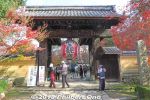
Kongorinji is a Tendai Buddhist temple established in 741 and the middle temple in the Koto Sanzan Temple Trio. The main temple hall is a National Treasure housing an 11-faced Kannon statue and 13 other statues designated as Important Cultural Properties.This is the Somon main gate to the temple. 総門
|
|
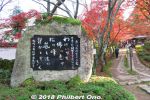
The temple was first built in 741 as ordered by Emperor Shomu. It later became a Tendai Buddhist temple in 850. It is famous for "blood-red" maple leaves in autumn.
|
|
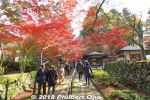
Off-season, normally you take a taxi (15 min.) from JR Inae Station if you don't have a car. There's a regular taxi that leaves the station once an hour.
|
|
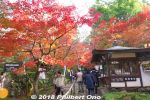
Temple ticket admission booth. ¥500 拝観受付
|
|
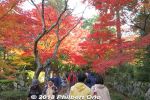
After the ticket admission booth, it's a delightful and colorful path to the temple.
|
|
|
|
|
|
|
|
|
|
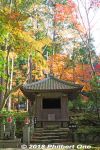
The first building you see. Nishiya-do hall housing Amida Nyorai buddha. Built in the Edo Period. 西谷堂 阿弥陀如来
|
|
|
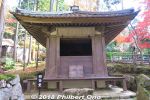
Nishiya-do hall housing Amida Nyorai buddha. Built in the Edo Period. 西谷堂 阿弥陀如来
|
|
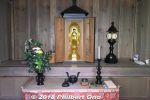
Inside Nishiya-do hall housing Amida Nyorai buddha. 西谷堂 阿弥陀如来
|
|
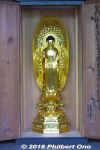
Nishiya-do hall housing Amida Nyorai buddha. Kongorinji Temple, Aisho, Shiga. 西谷堂 阿弥陀如来
|
|
|

Akamon Gate 赤門
|
|
|
|
|
|
|

About Kongorinji's famous temple garden.
|
|
|
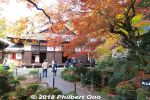
Famous temple garden built in the Momoyama Period (16th c.) to Edo Period. The building is the Kongorinji priest's residence. 名勝庭園 本坊
|
|
|
|
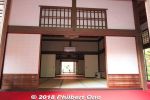
Priest's residence next to the famous garden. Reconstructed in 1978. 明寿院
|
|
|
|
|
|
|
|
|
|
|
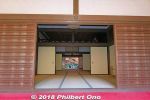
Priest's residence next to the famous garden. Reconstructed in 1978. 明寿院
|
|
|
|
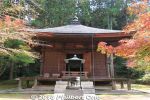
Jizo-do Hall built in 1997. Believers can train here. 地蔵堂
|
|
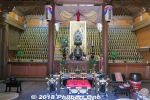
Inside the Jizo-do Hall built in 1997. 地蔵堂
|
|
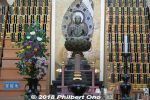
Inside the Jizo-do Hall built in 1997. 地蔵堂
|
|
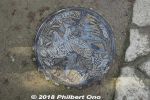
Aisho, Shiga manhole
|
|
|
|
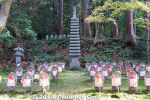
Garden of many Jizo statues.
|
|
|
|
|
|
|
|
|
|
|
|
|
|
|
|
|
|
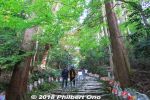
From here, the path to the temple (main hall) is lined with 1,000 Jizo statues.
|
|
|
|
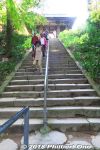
Steps to the Hondo main worship hall.
|
|
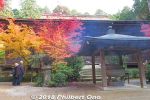
Hondo main hall
|
|
|
|
|
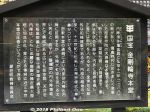
Kongorinji's main temple hall is a National Treasure housing an 11-faced Kannon statue and 13 other statues designated as Important Cultural Properties. Aisho, Shiga.
|
|
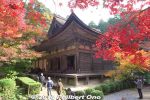
Built in 1288, Kongorinji Hondo main hall, National Treasure in autumn.
|
|
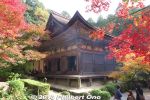
Kongorinji Hondo main hall, National Treasure amid autumn maple leaves.
|
|
|
|
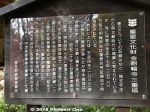
About the three-story pagoda, National Important Cultural Property.
|
|
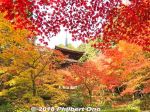
Kongorinji's three-story pagoda, National Important Cultural Property.
|
|
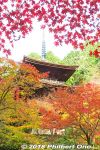
Kongorinji's three-story pagoda, National Important Cultural Property.
|
|
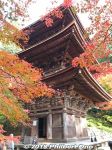
Kongorinji's three-story pagoda built in 1246, National Important Cultural Property.
|
|
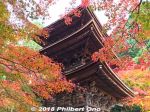
Kongorinji's three-story pagoda, National Important Cultural Property amid maple leaves.
|
|
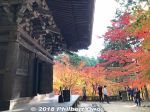
Kongorinji's three-story pagoda, National Important Cultural Property amid maple leaves.
|
|
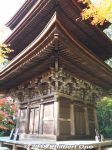
Kongorinji's three-story pagoda, National Important Cultural Property.
|
|
|
|
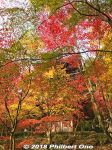
Path back to the main gate. Lots of eye candy.
|
|
|
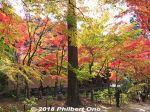
Another prime spot for autumn foliage at Kongorinji.
|
|
|
|
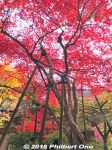
Looks like red maples are raining on you. Just spectacular.
|
|
|
|
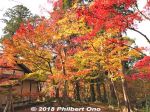
Autumn foliage near the Dojo.
|
|
|
|
|
|
|
|
|
|
|
|

Very artistic looking autumn leaves.
|
|
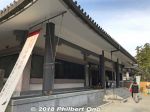
Aisho Town Museum.
|
|
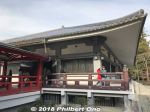
Aisho Town Museum.
|
|
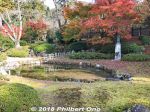
Small garden outside Aisho Town Museum.
|
|
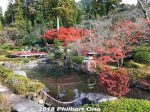
Small garden outside Aisho Town Museum.
|
|
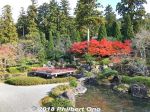
Small garden outside Aisho Town Museum.
|
|
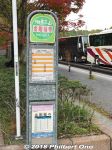
Near Koongorinji's main gate is a parking lot and bus stop.
|
|
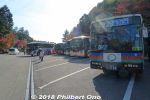
Shuttle bus on the right going to the next Koto Sanzan Temple.
|
|
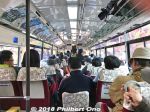
Inside the Koto Sanzan shuttle bus from Kongorinji to Hyakusaiji. Quite full this day.
|
|

The following photos were taken years earlier. Something things look the same, others have changed. Map of temple grounds.Established in 834 and located in Kora-cho town, Saimyoji is a Tendai Buddhist temple and the northern-most one in the Koto Sanzan Temple Trio.
The main temple hall, designated as Japan's first National Treasure, houses statues of gods with a carving of the 12 Oriental Zodiac signs on the head. Accessible by bus from Amago Station on the Omi Railway Line.
|
|

Front gate. This is where you pay the admission fee of 500 yen. During fall, the autumn leaves are brilliant, and you can enter the three-story pagoda (National Treasure) to see the wall paintings. MAP
|
|

Soon after you enter the temple, you see this "continuously blooming" cherry tree (fudan-zakura) planted next to a tree showing fall colors. This special cherry tree blooms in Nov. during the fall colors. 不断桜
|
|

Cherry blossoms which bloom in Nov. Designated as a Natural Monument and Cultural Property of Shiga. 不断桜
|
|
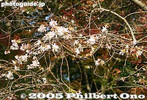
Cherry blossoms which bloom in Nov. This is full bloom. Not as glorious as the cherries in spring, but unusual to see them in Nov. 不断桜
|
|

Crossing the Meishin expressway. There's a bridge over a busy and noisy expressway which you cross to get to the other side of the temple grounds.
|
|

The path was a stunning showcase for autumn foilage.
|
|

Incredibly beautiful
|
|
|

Autumn leaves and stone wall
|
|
|
|
|
|
|
|
|

Stairs to autumn heaven. Up to here, the path was just filled with colors. And more still awaited.
|
|

At the top of the stairs
|
|
|
|
|

Nitenmon Gate to main temple (Hondo)
|
|

View from gate
|
|

View from gate
|
|
|
|
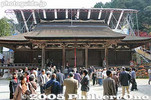
Japan's first National Treasure undergoing renovation of the roof. Saimyoji temple's Hondo hall (National Treasure) in Kora, Shiga. 本堂In 1571, Oda Nobunaga ordered Saimyoji to be burned down right after scorching Enryakuji on Mt. Hiei. Fortunately, this Kamakura-Period main hall and the pagoda survived.
|
|

Saimyoji temple Hondo Hall (National Treasure) in Kora, Shiga. In 1571, Oda Nobunaga ordered Saimyoji to be burned down right after torching Enryakuji on Mt. Hiei. Fortunately, this Kamakura-Period main hall and the pagoda survived. 本堂
|
|

Temple grounds
|
|

Inside Saimyoji temple's Hondo hall.
|
|

Hondo grounds
|
|

Hondo grounds
|
|

3-story pagoda, a National TreasureIn 1571, Oda Nobunaga ordered Saimyoji to be burned down right after scorching Enryakuji on Mt. Hiei. Fortunately, this Kamakura-Period main hall and the pagoda survived. The pagoda is 23.7 meters high.
|
|

Oda Nobunaga burned Saimyoji right after scorching Enryakuji on Mt. Hiei. Fortunately, the main hall and the pagoda survived. 3-story pagoda, a National Treasure
|
|

3-story pagoda, a National Treasure
|
|

3-story pagoda, a National Treasure
|
|

Saimyoji's 3-story pagoda, a National Treasure.
|
|

During the peak autumn season in Nov., the public is allowed to enter the pagoda to view the precious paintings on the wooden walls and pillars.
|
|

Veil of autumn leaves. Only several people can fit inside the first floor of the pagoda at one time, so you may have to wait in line.
|
|

3-story pagoda and fall colors. Photography is not allowed inside, but I highly recommend going inside. Admission 1,000 yen.
|
|

Closeup of pagoda
|
|
|
|
|

Temple bell
|
|

Temple bell, donate 50 yen to ring it
|
|
|
|

11-faced Kannon statue
|
|

Miniature Kannon
|
|

Miniature Kannon. Pay money to have your name under one of them.
|
|

Horaitei garden
|
|

I thought the fall colors were most abundant at Saimyoji. We could also enter the 3-story pagoda, a National Treasure. (You cannot enter the pagoda at the other temples.)
|
|

Saimyoji was my favorite Koto Sanzan temple
|
|

Tourists come by the busloads
|
|

Convenient shuttle bus. Visit Kongorinji temple next.During the peak fall season from mid-Nov., you can buy an Omi Railway train/bus pass for only 1,800 yen to visit all three Koto Sanzan temples plus Eigenji Temple. Ride on the Omi Railway Line to the closest train station (Hikone or Yokaichi) and hop on a shuttle bus like this one to visit the Koto Sanzan Temple Trio, plus Eigenji. There's a shuttle bus every hour or so that shuttle between the four temples. The pass is good for 1 day.
|
|

Note: The following photos were taken years ago. More recent photos are at the beginning of this album. Kongorinji is a Tendai Buddhist temple established in 741 and the middle temple in the Koto Sanzan Temple Trio. The main temple hall is a National Treasure housing an 11-faced Kannon statue and 13 other statues designated as Important Cultural Properties.
They come by the busloads. If possible, you should avoid visiting the Koto Sanzan Temple Trio and Eigenji during the weekend in fall. If possible, you should avoid visiting the Koto Sanzan Temple Trio and Eigenji during the weekend in fall.
|
|

Front gate. The temple was first built in 741 as ordered by Emperor Shomu. It later became a Tendai Buddhist temple in 850. It is famous for "blood-red" maple leaves in autumn. Map
|
|

They come by the busloads. If possible, you should avoid visiting the Koto Sanzan Temple Trio and Eigenji during the weekend in fall. If possible, you should avoid visiting the Koto Sanzan Temple Trio and Eigenji during the weekend in fall. Stone marker.
|
|

Foilage on the path
|
|

Nice path with fall colors
|
|

More path foilage
|
|

It's all too beautiful
|
|
|
|
|

Finally we see a building
|
|

And more leaves
|
|
|
|